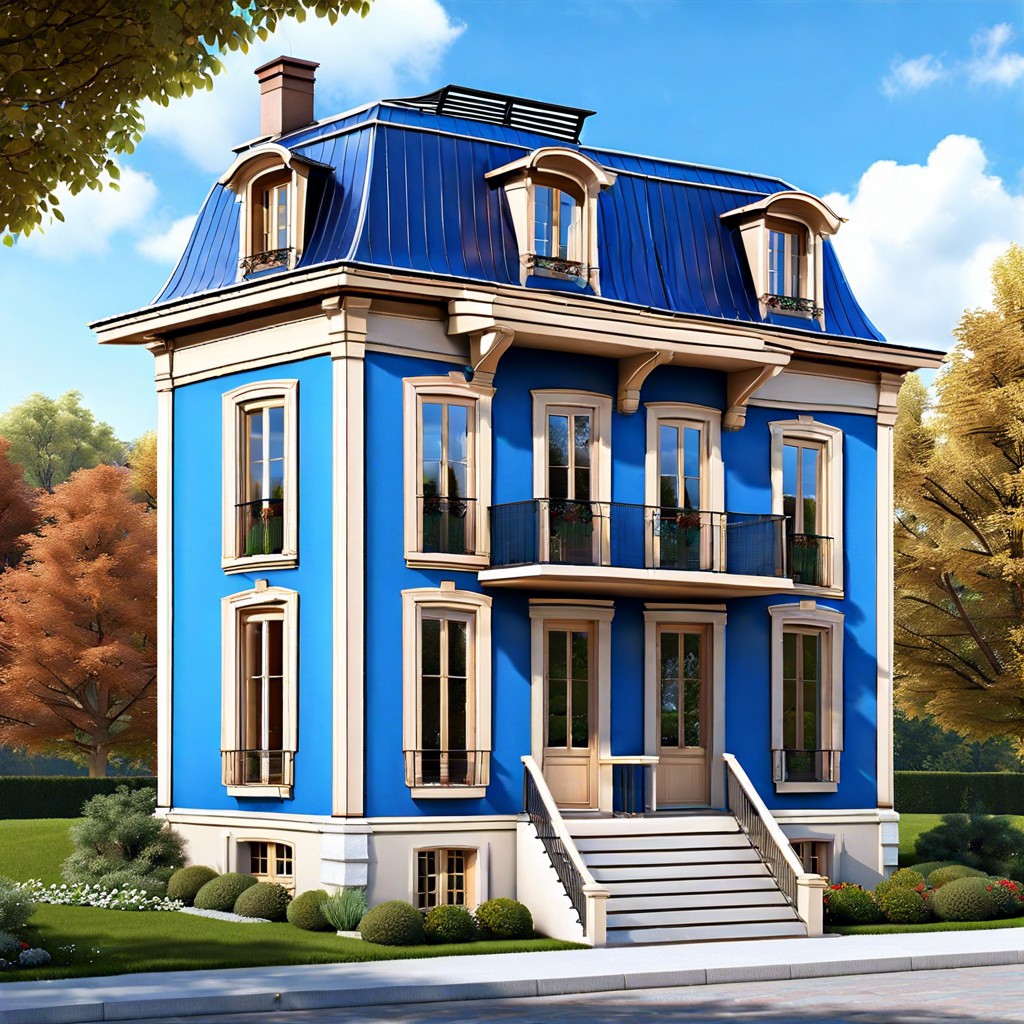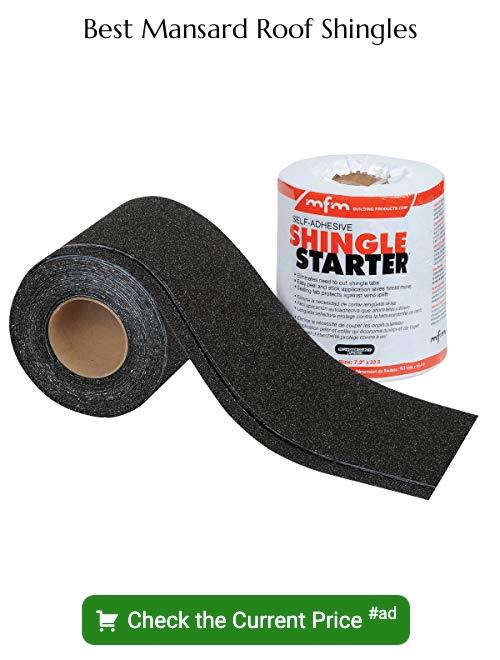Last updated on
Discover the distinctive characteristics and benefits of a mansard roof in this comprehensive guide.
Key takeaways:
- A mansard roof features two slopes on all four sides.
- Mansard roofs come in straight and curved styles.
- Pros of a mansard roof: additional living space, potential for expansion.
- Cons of a mansard roof: higher construction/maintenance costs, potential for water pooling and structural risks.
- Top roofing materials for a mansard roof: asphalt shingles, slate tiles, metal roofing.
What Is a Mansard Roof?

A mansard roof features two slopes on all four sides, with the lower slope being steeper than the upper. This design creates an additional living or storage space within the roof, often utilized as a full attic or living quarters. Named after the French architect François Mansart in the 17th century, this roof type became popular in Europe during the Renaissance period and saw a revival in the 19th century in America, fueling the “Second Empire” architectural style.
This structure not only significantly increases the usable space in a building but also provides flexibility for future expansions and renovations. Characteristic of its design are the dormer windows that pierce the lower slope, enhancing natural light and ventilation of the interior spaces. The mansard roof elegantly combines aesthetics with functionality, making it a distinguished choice in historic and new constructions.
Types of Mansard Roofs
Mansard roofs come in two main styles: straight and curved. The straight style, often seen in traditional architecture, features a flat façade which gives buildings a box-like structure. Its simplicity makes it a good fit for practical, space-maximizing attic designs. On the other hand, the curved type offers an elegant aesthetic that adds a touch of sophistication. Commonly found in French chateaus, the curves can vary from slight to pronounced, deeply impacting the home’s visual appeal.
Besides the basic form, mansard roofs can include additional elements like dormer windows. These windows break up the roof’s slope, providing natural light and extra headroom in attic spaces, thereby creating a more livable area.
Combining these features allows homeowners to customize their mansard roofs to match both their functional needs and style preferences, making it a versatile choice for many.
Pros & Cons of a Mansard Roof
Mansard roofs charm with their aesthetic allure, often enhancing property value simply by their distinctive appearance. The design affords additional living space, making it ideal for an attic or upper-story rooms. This spatial efficiency is a significant advantage, lending itself to future expansion without altering the roofline.
On the flip side, the intricate design of mansard roofs translates to higher construction and maintenance costs. Their nearly flat top also leads to potential water pooling issues if not properly attended to, which increases the risk of leaks. Moreover, in regions with heavy snowfall, the low-pitched sides of the roof may gather excessive snow, posing a structural risk unless properly reinforced. Thus, while visually appealing and practical for adding space, mansard roofs require careful consideration regarding location and upkeep.
What’s the Right Roofing Material for a Mansard Roof?
Choosing the correct material is crucial for a mansard roof due to its unique design. Here are some top options:
Asphalt shingles are among the most common choices due to their affordability and versatility. They work well on the steep slopes of a mansard roof, offering a variety of colors to match different architectural styles.
Slate tiles bring an element of elegance to the steep sections of a mansard roof. Although more expensive and heavier, slate’s durability and longevity justify the investment. It’s particularly suitable for historic or high-end homes where aesthetic quality is a priority.
Metal roofing, like copper or zinc, adds a modern twist to this classic roof style. Metal is lightweight, durable, and offers exceptional resistance to weather elements. Its ability to be crafted into various shapes makes it ideal for the ornate details often found in mansard designs.
Lastly, remember that proper installation is key. Due to the complicated shapes and transitions of mansard roofs, skilled roofers are essential to avoid leaks and ensure longevity. Be sure to engage a professional with experience in your chosen material.
How Do You Find a High-Quality Roofer for Your Mansard Roof Replacement?
Selecting the right roofer is akin to picking the perfect hat for an outfit—it needs to fit just right and suit your specific needs. Start by looking for local roofing contractors with experience in mansard roof installation and repair. Their familiarity with this style means they’re aware of the intricate angles and details involved.
Ask for references and check online reviews to gauge their professionalism and quality of work. Positive feedback coupled with photographs of previous projects can speak volumes about their capacity to handle your mansard roof.
Ensure they are licensed, insured, and adhere to the building codes specific to your area. This legal groundwork will protect you in case of accidents or issues during the roofing process.
Finally, obtain multiple quotes to compare pricing and understand the scope of work proposed by different contractors. Be wary of quotes that seem too good to be true—they usually are. Opting for a mid-range offer is often the sweet spot between quality workmanship and cost.

